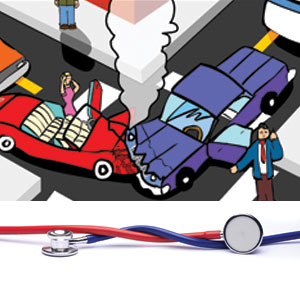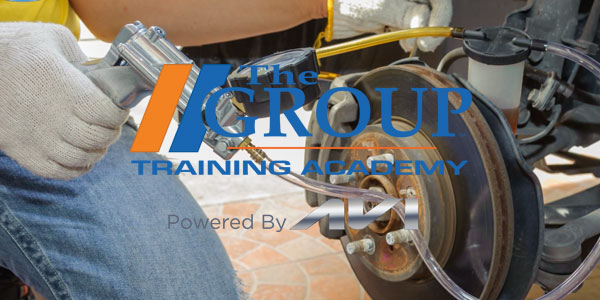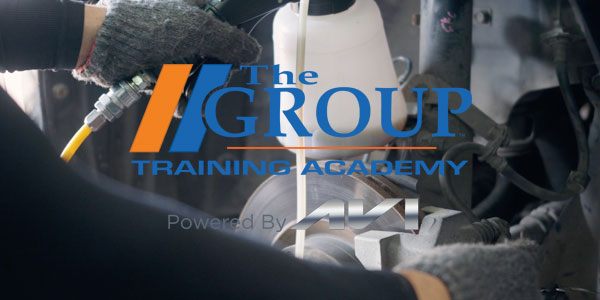By Andrew Markel
The brake repair market is starting to become dominated by a “good enough” mentality. Good enough to some is just being able to stop in a “reasonable” distance at normal driving and last for 10,000 miles. But, when asked to perform an emergency stop or a series of hard stops, the vehicle can become unsafe with longer stops and a low pedal. You may rationalize that your customer’s customer may never perform such severe maneuvers, but how can you be sure?
Are you sure that little old lady does not drive with two feet? Can you be sure that a truck will never tow a boat? Is really worth it for your customers to install cheap brake pads in order to be able to advertise and hopefully make profit on a $99 brake special?
Inferior brake pads will start to fade and pedal travel will be almost to the floor. Look at the pedal travel data on the second hot stop of the FMVSS (Federal Motor Vehicle Safety Standards) Test. It is the friction level that provides the deceleration torque to stop the car, but it is the pedal travel or fluid displacement that actuates the brake and is required for proper ABS functionality. If the fluid displacement increases too much, it can dramatically inhibit the response of the anti-lock brake system. Also, inferior pads will start to smell worse than the average burnt clutch. Some inferior brake pads may have a very acrid or pungent aroma due to the use of cheap glues and fillers. Also, the smell can be attributed to coatings and paints that may be burning.
Look at the coatings or paint on the brake pads. Often the best-looking brake pad will not look the same after four stops from 55 mph. This is because the paint will burn off and often catch fire. This will leave the metal backing plate exposed to the elements. Corrosion may cause rust-jacking that can weaken the bond of the friction material to the backing plate. Also, the rust can spread to slides and shims causing unwanted noise. A high-quality pad will have a coating or plating on the backing plate that will stand up to the heat of four hard stops with little change in appearance.
Some inferior brake pad manufacturers use only a handful of friction material formulations across an entire product catalog. This means that the same friction material may be used on a SUV and compact, the only thing they change is the backing plate. This can lead to compromises and may even influence the braking balance front to rear.
Look beyond the edge code. The edge code system has been around since the 1950s and was initially designed as a quality standard for manufacturers. The test was used to determine if a supplier was shipping from the assembly plant same stuff as the last batch. The edge code doesn’t reveal how it will perform a specific vehicle or under real world conditions.
Another issue is the use of copper and other metals that turn into environmentally damaging compounds when they are heated during braking. All brake pads produce dust — where the dust goes is becoming a bigger issue. When dust is produced by the brake pad, the majority of the dust falls on the road where it is washed into the storm drains that wash into larger bodies of water. It can also end up in your lungs. Metals like copper will not kill large animals, but it kills the small microorganisms lower in the food chain. When the foundation of the food chain dies, so do the rest of the creatures in it.
 Some metals and their derivatives can cause cancer and birth defects in humans. There is a current move in California to significantly limit or eliminate the use of copper in brake pads. This is expected to be adopted nationwide in the future. The question remains as to who will be responsible for disposal of what is in the field and when? Also, antimony is banned by Proposition 65 in California. Violations of Proposition 65 may carry prison sentences. Environmental issues and carcinogen class action law suits can run into the hundreds of millions of dollars and place even the largest of companies into financial disasters. These liabilities are extremely powerful as they reach into the past before protective legislation.
Some metals and their derivatives can cause cancer and birth defects in humans. There is a current move in California to significantly limit or eliminate the use of copper in brake pads. This is expected to be adopted nationwide in the future. The question remains as to who will be responsible for disposal of what is in the field and when? Also, antimony is banned by Proposition 65 in California. Violations of Proposition 65 may carry prison sentences. Environmental issues and carcinogen class action law suits can run into the hundreds of millions of dollars and place even the largest of companies into financial disasters. These liabilities are extremely powerful as they reach into the past before protective legislation.
Ask for MSDS sheets and certifications that materials do not contain antimony compounds, chromium, cadmium, lead, asbestos or other carcinogens. You have a right to be informed. You may also request indemnification by the brake manufacturer in regards to these issues; however indemnification may not totally limit your exposure, especially if your brake manufacturer is in a protected foreign country.












